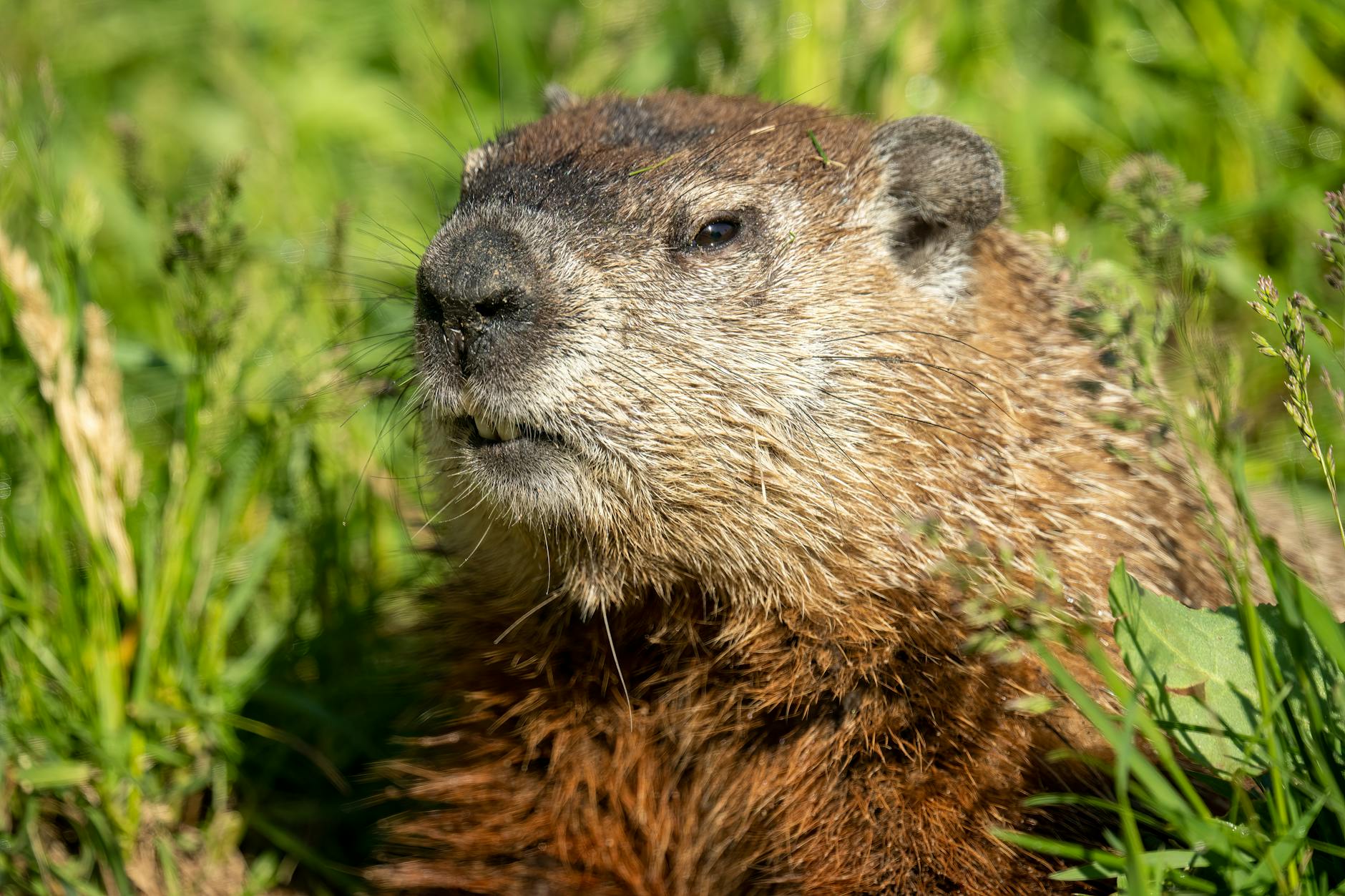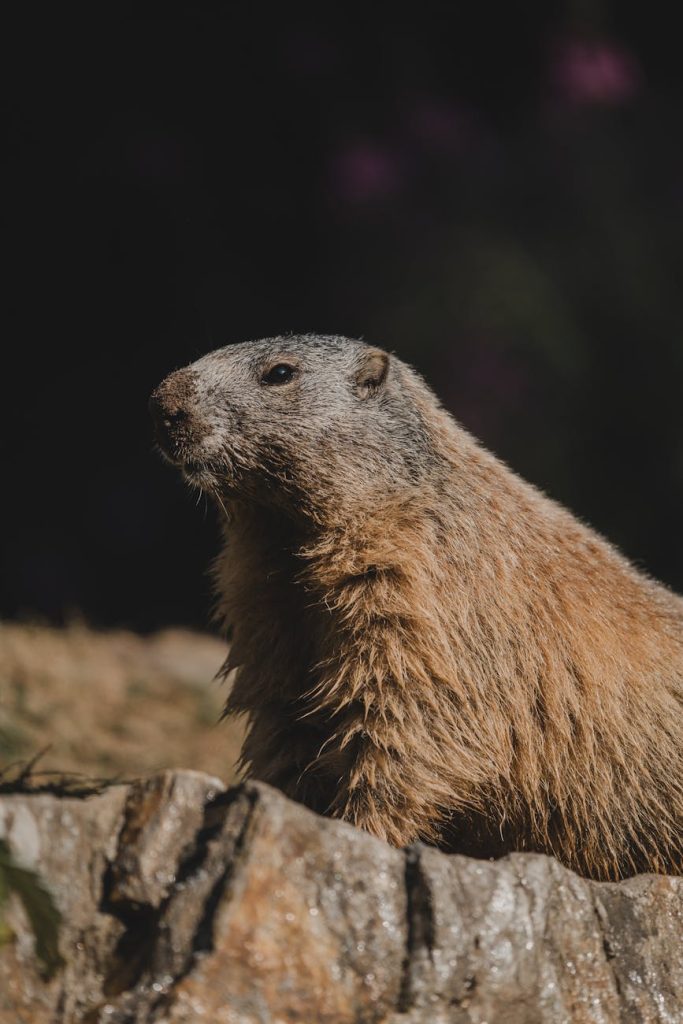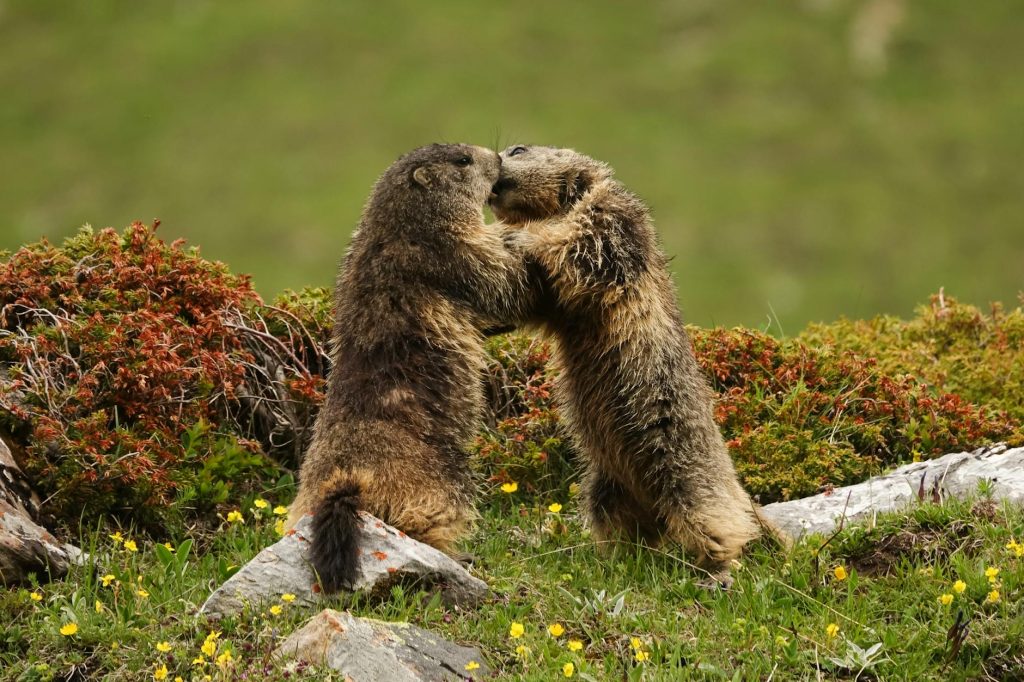
Perched on rocky slopes and nestled in alpine meadows, marmots are chunky, charismatic rodents that seem to embody the spirit of the mountains. With their plump bodies, expressive faces, and tendency to let out sharp warning whistles, marmots are both delightful to watch and vital to their ecosystems.
What Exactly Is a Marmot?
Marmots are large ground squirrels belonging to the genus Marmota. There are 15 species spread across North America, Europe, and Asia. The most familiar to North American hikers is the yellow-bellied marmot, often spotted sunbathing on boulders in the western U.S. and Canada. Another notable cousin is the hoary marmot, known as the “whistler” due to its piercing alarm call.
These robust rodents can weigh anywhere from 6 to 15 pounds, depending on the species and time of year. By autumn, they’re at their heaviest—essentially round balls of fur—as they prepare for one of the most impressive hibernations in the animal kingdom.
Life at High Altitude
Marmots are true alpine specialists. They thrive in open, treeless environments where they can see predators from a distance. Their burrows—complex underground tunnels—serve as safe havens from danger and harsh weather. During summer, marmots are active foragers, munching on grasses, flowers, and other plants to build up fat reserves.
Come winter, marmots retreat underground and hibernate for up to eight months. Their heart rate drops dramatically, breathing slows, and their body temperature can fall to near freezing. This extended slumber helps them survive the brutal mountain cold and food scarcity.
Social, Vocal, and Surprisingly Complex
Marmots are highly social creatures. Many species live in colonies with structured social hierarchies. They communicate using whistles, trills, and chirps—each call serving a different purpose, from alerting about predators to locating family members.
One of the most iconic marmot behaviors is the alarm whistle. Spotting a hawk or coyote? A sentinel marmot will let out a loud “tweet!” that echoes across the landscape, warning others to dash for cover. It’s so distinctive that many hikers have mistaken it for a bird call.
Marmots and People
From the Alps to the Rockies, marmots are part of mountain lore. In Europe, the alpine marmot has been a folk favorite for centuries, even featured in traditional remedies and old-time music. In the U.S., groundhog species like the woodchuck—a type of marmot—have their own holiday: Groundhog Day, where folklore claims they can predict the length of winter.
Some regions also consider marmots agricultural pests due to burrowing, but overall, they play a positive role in soil aeration and seed dispersal.
Conservation and Coexistence
Most marmot species are doing well, but a few face threats. The Vancouver Island marmot, for example, is critically endangered due to habitat loss and fragmentation. Conservation efforts, including captive breeding and reintroduction, are helping to bring its numbers back.
By respecting marmot habitats—staying on trails, keeping dogs leashed, and not feeding wildlife—we can continue to enjoy these mountain whistleblowers without disrupting their way of life.
In Summary:
Marmots may not be as famous as bears or eagles, but they’re just as essential to the ecosystems they call home. Whether sunning on a rock or sounding the alarm, these rotund rodents are a reminder that even the smallest creatures can make a big impression on the alpine stage.
More photos below ↓



















Disclaimer: This blog post is for edutainment purposes only and may not be entirely accurate.






